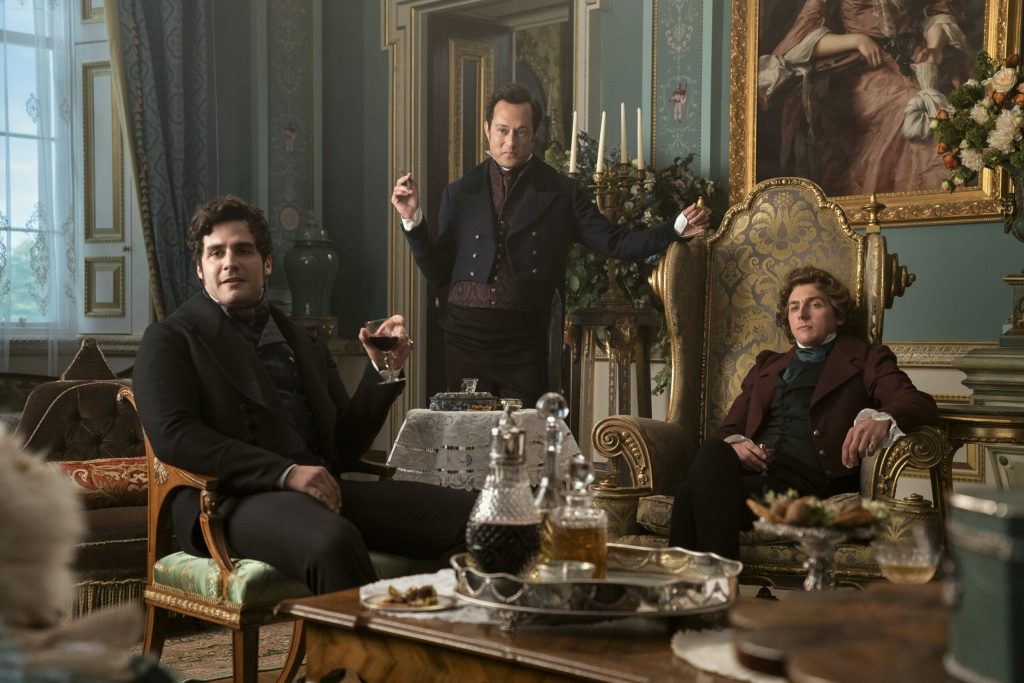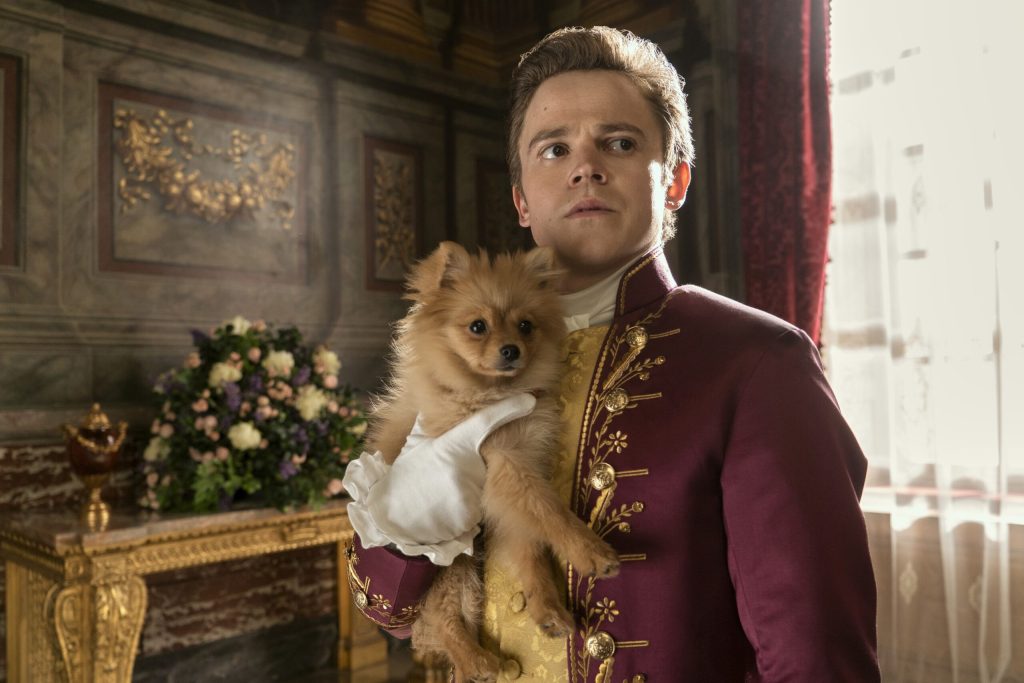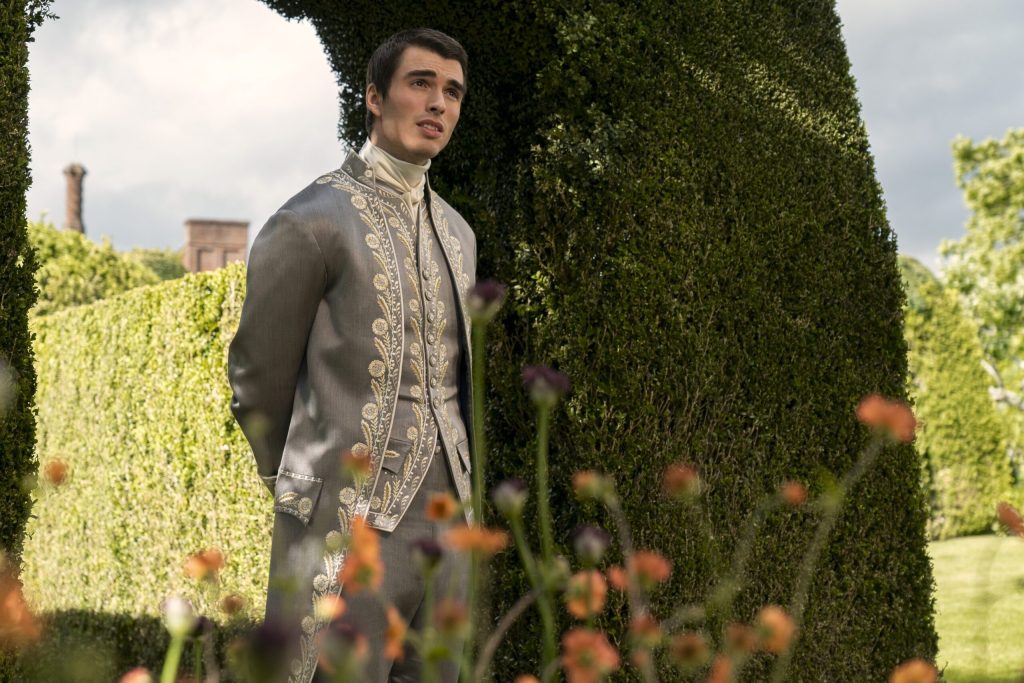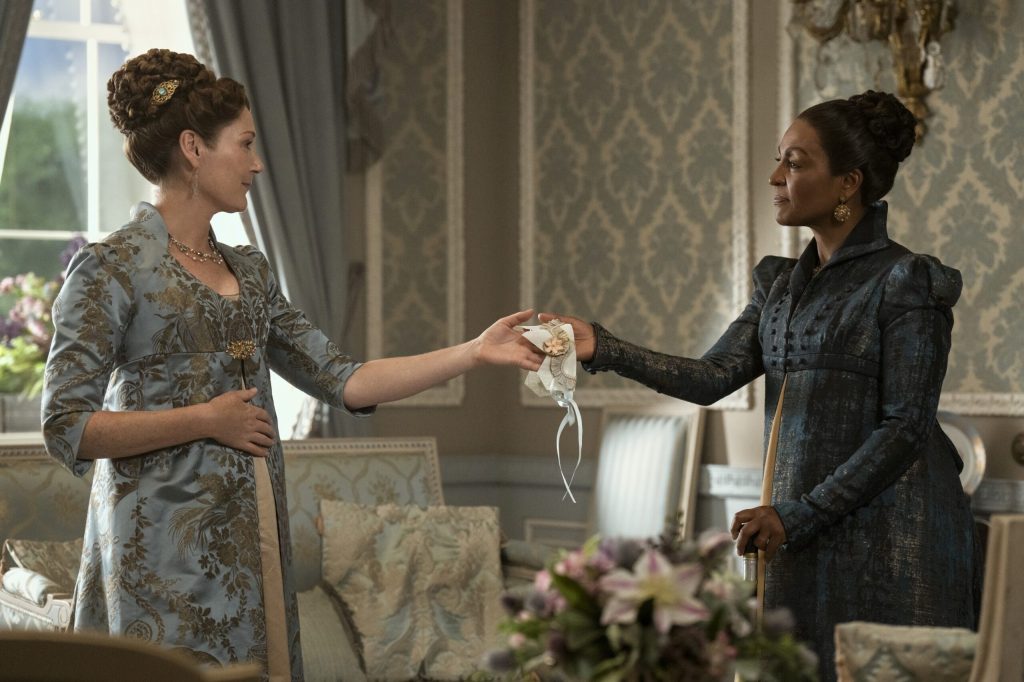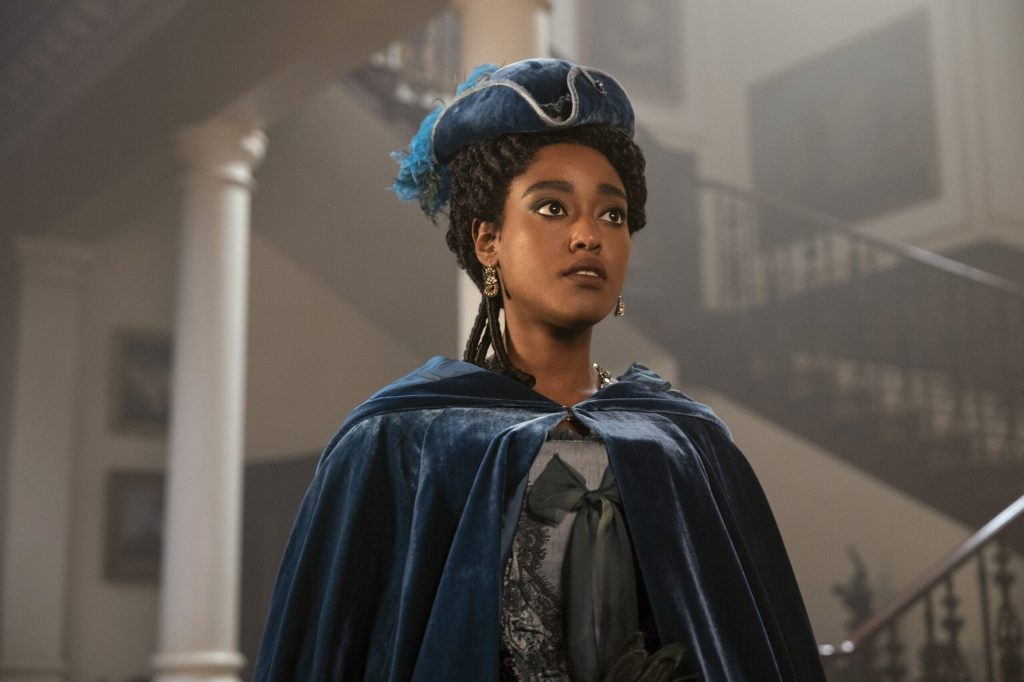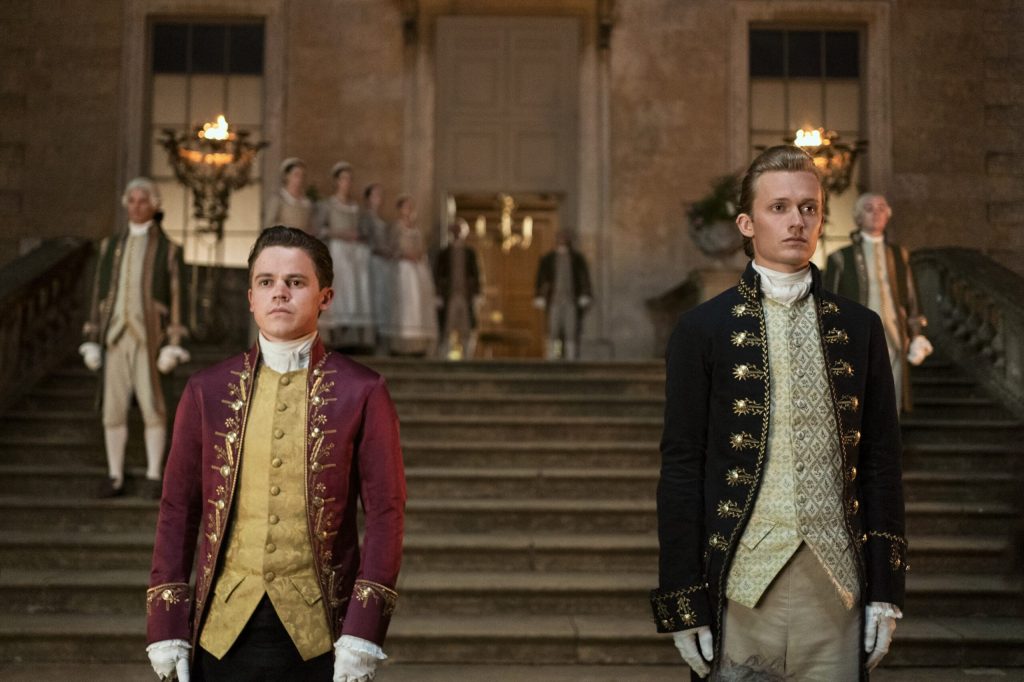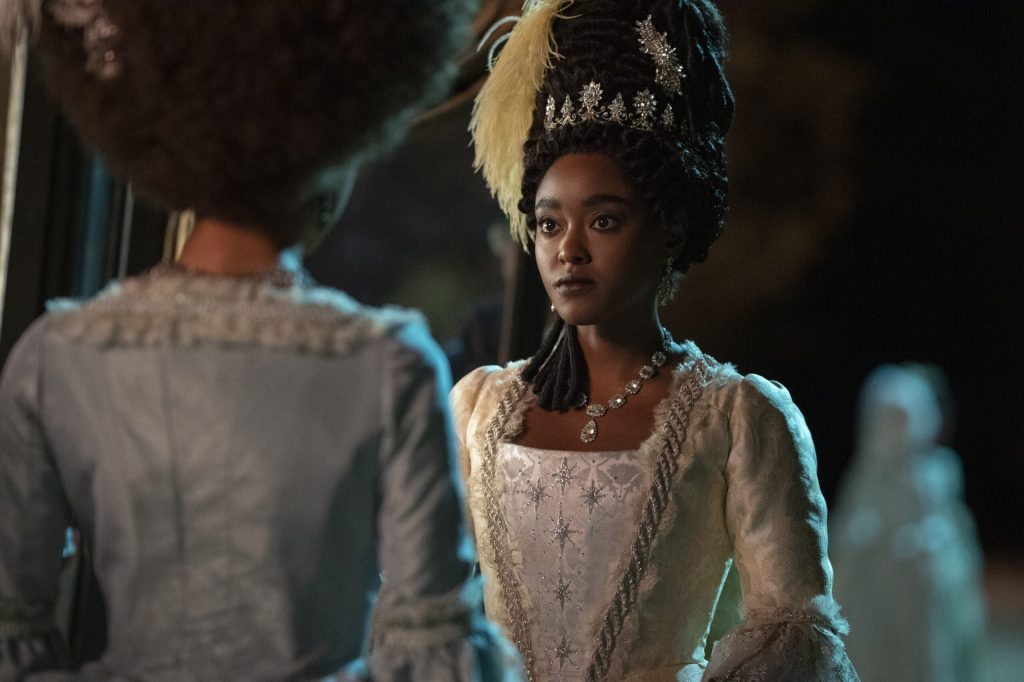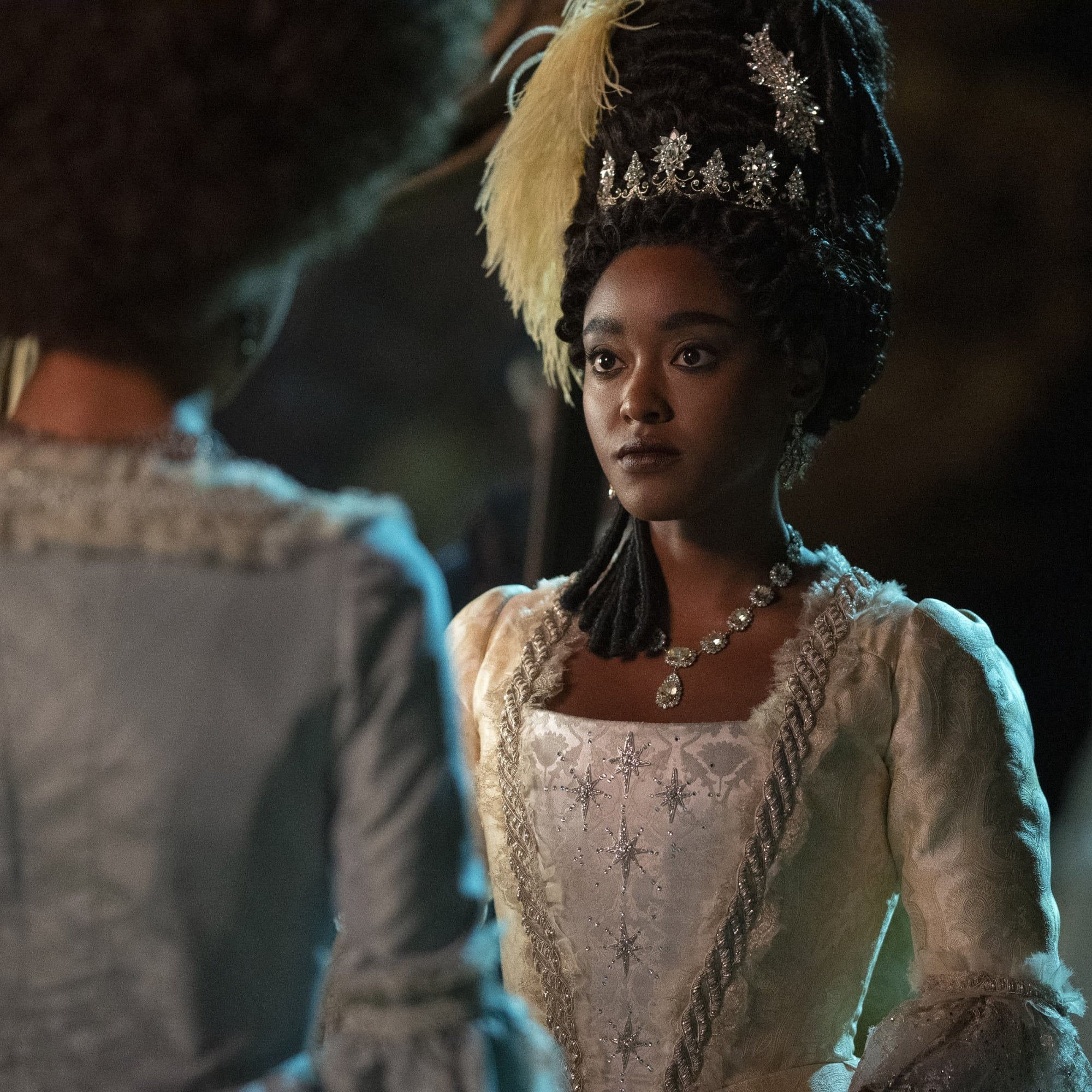
- POPSUGAR Australia
- Celebrity
- 7 Major Differences Between the “Queen Charlotte” Novel and TV Show
7 Major Differences Between the “Queen Charlotte” Novel and TV Show

Excellent news, gentle readers! If you are, in fact, a reader – and not just a viewer – of the Bridgerton universe, you’ll be delighted that there is a book version of the “Queen Charlotte” miniseries. The novel is penned by original Bridgerton author Julia Quinn and Shonda Rhimes, the writer-producer behind the Netflix adaptation, and it gives us even more juicy details on the love story that started it all, between King George III and Queen Charlotte.
Of course, a book and a TV show are two very different types of storytelling, so it shouldn’t come as much of a surprise that the book is a little different from the version you’ve already watched on Netflix. The book dives deeper into some of our favorite characters, revealing more about how their stories played out when the camera was elsewhere (hi, Brimsley!), while other storylines are glossed over on the page but made a big splash on the small screen. It’s a different perspective that expands the “Queen Charlotte” universe even further and lets us dive deeper into what these characters are really thinking and feeling.
If you’ve already read the book – or if you don’t mind some spoilers – here are a few of the biggest differences you may have noticed between the book and TV versions of “Queen Charlotte.”
The "Race For an Heir"
A significant portion of the “Queen Charlotte” TV series is set in the present day, immediately after the events of the second season of “Bridgerton.” The present-day plot focuses on Charlotte’s single-minded drive to get her children married so they can have a legitimate heir and carry on the royal line, following the death of the prince regent’s only daughter (and the only legitimate grandchild of the royal household).
In the books, this plotline is almost nonexistent, except for bookends at the beginning and end. The prologue narrates the death of Princess Charlotte in childbirth. The epilogue is almost word for word the final scene of the TV show, with Charlotte going to see George to tell him they have a grandchild (the future Queen Victoria, in fact) on the way and to reminisce briefly about their own love story.
Brimsley's Perspective
Brimsley is a significant but still supporting character in the TV version, but in the book, he’s a full-fledged point-of-view character. We learn much more about him, including that his first name is Bartholomew, that he’s an only child, and how his loyalty to Charlotte grows over time. He is also present for more scenes and has his thoughts narrated in his point-of-view chapters. He’s even around for some extended versions of the scenes we’ve already seen on screen, including a hilariously awkward “extended cut” of the scene where Agatha Danbury makes a few “instructional” sketches for the newlywed queen.
George's Point of View
The TV version of the story largely skims over the details of George’s backstory, from how he became king to how he feels about much of the goings-on. It’s not until the fourth episode that we flash back and see the events of the first three episodes again from his perspective, and the “point of view” of the show mostly remains on Charlotte.
In the book, however, George’s voice is present from the beginning, with many chapters written from his point of view. We learn more about exactly how his family story unfolded, including his father’s untimely death (hence why his mother, Augusta, is a princess, not a queen), his terrible grandfather, and more. We also, heartbreakingly, get inside his tormented mind and heart from the very beginning, giving more insights into the lengths he will go to in order to “cure” himself of his illness.
Violet's "Garden in Bloom"
On screen, part of the present-day storyline is occupied with Violet Bridgerton‘s slow and uncomfortable realization that she again longs for romance and intimacy, something she thought she’d never have again after the death of her husband, Edmund. She confides about it to Lady Danbury, who in turn shares stories of her own, terrible marriage and the freedom of her widowhood.
In the book, however, this entire plotline is completely gone from the story. The only present-day scenes are the bookends featuring Charlotte and George, and young Violet has no role at all in the past timeline. In fact, the entire timeline of the book and the show are a bit muddled. The book explicitly says its present-day scenes (and therefore the main portion of “Bridgerton”) take place 56 years after the flashbacks. If that’s the case, then Lady Danbury and the queen, among others, should be at least in their 70s in the “present” day, but the show does not depict them as being quite that old.
Lady Danbury's Widowhood
Both the TV series and the book version depict how Agatha Danbury truly comes into her own after her much-older husband dies. Both versions also touch on how traumatized she is, due to what amounts to years of marital rape, and how negatively she views sex as a result.
In the book, the story focuses mostly on Agatha’s quest to secure her family’s future, with the only hint of romance coming through a brief courtship with Charlotte’s brother, Prince Adolphus. The TV show, however, shows Agatha forming a bond with Lord Ledger, Violet’s father, who is unhappily married to one of the racist ladies-in-waiting at court. She’s ultimately able to take pleasure and control in bed, with a one-off affair with Lord Ledger that, decades later, Violet seemingly uncovers. The book skips this storyline entirely; in fact, Lord Ledger only appears once in passing.
The Other Palace Romance
Throughout the TV version of “Queen Charlotte,” we see George and Charlotte’s dedicated right-hand men, Reynolds and Brimsley, engaging in an affair of their own. It’s mostly kept to the sidelines, and we don’t know much about it other than how their relationship conflicts with their loyalties to their respective royal bosses.
Thanks to book chapters from Brimsley’s perspective, we get to see the romance unfold in more detail. It starts out, apparently, as something similar to George and Charlotte: a little hostile, but also wildly attracted to each other. In time, they become more emotionally involved, to the point where Reynolds even reveals how he became George’s aide: they grew up together, were each other’s only friends, and knew each other’s secrets. Near the end, George and Charlotte actually spot Brimsley and Reynolds dancing and are happy for them (in the TV version, we only see the two men dancing, not the royal couple noticing them).
Charlotte Confides in Agatha
Both versions of the story place a strong emphasis on the budding friendship and, eventually, undying loyalty between Charlotte and Agatha. In the book, however, we get extended versions of several scenes from the TV show that demonstrate just how deeply Charlotte trusts Agatha.
One of the clearest examples comes when Charlotte tries to run away and hides out at Danbury House. In the TV show, the scene skips directly from the women agreeing to start their friendship over to the arrival of Brimsley and Adolphus to take Charlotte back to the palace. In the book, however, the scene between Charlotte and Agatha is longer, and it makes clear something the show never quite does: Charlotte does, in fact, confide in Agatha about George’s illness. That conversation makes Agatha one of the only people outside the royal family to know the truth, and it highlights how much Charlotte already trusts her.


